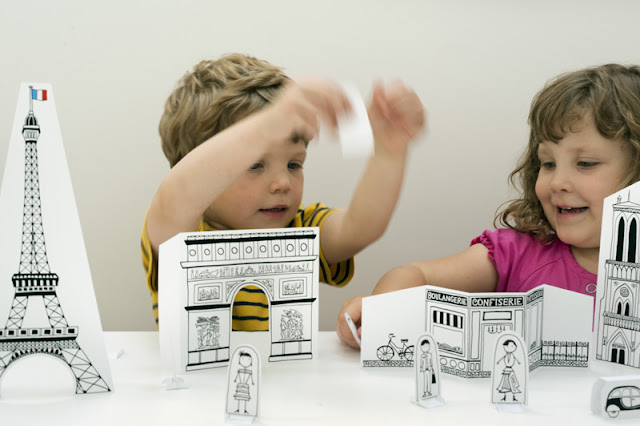Maravilhoso trabalho de Stephen Wilkes.
Páginas
30.8.11
29.8.11
Museu Chinês de Comics e Animação
Um dos meus escritórios favoritos de arquitetura, MVRDV, continua surpreendendo!
O vídeo abaixo explica de uma forma bem bacana o conceito do projeto… assistam!
Pra quem quer saber um pouco mais, segue texto explicativo que retirei do site da MVRDV:
Pra quem quer saber um pouco mais, segue texto explicativo que retirei do site da MVRDV:
"(Rotterdam, 5th May 2011) Hangzhou urban planning bureau has announced MVRDV winner of the international design competition for the China Comic and Animation Museum (CCAM) in Hangzhou, China. MVRDV won with a design referring to the speech balloon: a series of eight speech balloon shaped volumes create an internally complex museum experience of in total 32.000m2. Part of the project is also a series of parks on islands, a public plaza and a 13.000m2 expo centre. Construction start is envisioned for 2012, the total budget is 92 million Euro.
Comics and animations have long been considered a form of entertainment for the younger generations but develop more and more into a sophisticated art form. The initiative for a museum especially for this relatively recent art form creates a platform which will unite the worlds of art and entertainment. By using one of the cartoon’s prime characteristics – the speech balloon – the building will instantly be recognized as place for cartoons, comics and animations. The neutral speech balloon becomes 3d.
The 32.000m2 are divided into eight volumes which are interconnected allowing for a circular visit of the entire program. Services such as the lobby, education, three theatres/cinemas with in total 1111 seats and a comic book library occupy each their own balloon. If two balloons touch in the interior a large opening allows access and views in-between the volumes. The balloon shape allows for supple exhibitions, the permanent collection is presented in a chronological spiral whereas the temporary exhibition hall offers total flexibility. Amsterdam based exhibition architects Kossman.deJong tested the spaces and designed exhibition configurations which appeal to different age groups and allow large crowds to visit the exhibition. One of the balloons is devoted to interactive experience in which visitors can actively experiment with all sorts of animation techniques like blue screen, stop motion, drawing, creating emotions etc. The core attraction of this space is a gigantic 3D zoetrope. The routing of the museum permits short or long visits, visits to the cinema, the temporary exhibition or the roof terrace restaurant. The façade of the museum is covered in a cartoon relief referring to a Chinese vase. The monochrome white concrete façade allows the speech balloons to function: texts can be projected onto the façade. The relief was designed in collaboration with Amsterdam based graphic designers JongeMeesters.
Most of the 13.7 ha site is occupied by a new park on a series of islands in White Horse Lake. Reed beds are used to improve the water quality. Boat rides offer an added attraction. A separate expo building of 25.000m2 will house large fairs and the annual China International Comic and Animation Festival (CICAF). In-between expo and CCAM a public plaza will be the centre of this festival which is the county’s largest cartoon and animation event and has been held annually in Hangzhou since 2005.
Hangzhou is a metropolis with 6.4 million inhabitants 180 km southwest of Shanghai. The Museum will become a new focal point on the less populated southern side of Qiantang river. The CCAM will consolidate the city’s leading position as China’s capital of the animation industry. The first phase of the Comic and Animation Centre is close to completion, the series of hill-shaped buildings containing offices, a hotel and a conference centre. The new museum will be the icon of this larger development.
The museum will contain a multitude of interventions such as ground storage, natural ventilation and adiabatic cooling, all focused towards an excellent energy efficiency rating. The structural concept by Arup enhances the sustainable profile of the building: the aerodynamic design results in even wind pressure and lower need for air-conditioning. The box in box construction of the bubbles permits different conditions inside the building and improves the energy efficiency.
MVRDV won the competition of EMBT, Atelier Bow Wow, Tongji Institute of Architectural Design and Tsinghua Architectural Design. The MVRDV team consists further of Kossman.deJong exhibition architects, local architect Zhubo Architectural & Engineering Design, Arup engineers and JongeMeesters graphic design."
Postado por
carol
28.8.11
Tenugui Design
Tenugui é um tradicional tecido japonês feito de algodão e usado para os mais diferentes propósitos.
Fica difícil escolher qual estampa é a mais bonita.
Postado por
carol
26.8.11
Assinar:
Comentários (Atom)
























































